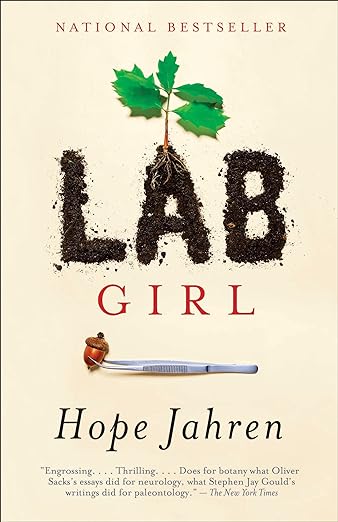This article provides guidance and tips for authors looking to find artwork and images for their scientific book cover, which is a type of non-fiction book cover. With the rise of self-publishing, traditional publishers are cutting costs by asking authors to provide their own cover art. Therefore, this post will explore the options for royalty-free stock images and pre-made cover templates and key considerations to keep in mind when designing your scientific book cover. Furthermore, it includes factors worth considering before you start the cover design and resources for crafting a compelling scientific book cover.
Whether you are working with a designer or creating your own cover, this article will help you create a visually appealing and effective book cover that accurately represents your content.
- When is the author responsible for the book cover design?
- What are and how to find royalty-free stock images and artwork?
- How to find pre-made cover templates?
- What to consider before you start your scientific book cover design?
- What are the elements of a compelling scientific book cover?
- What are good examples of scientific book covers?
When is the author responsible for the book cover design?
Academic publishing
Nowadays, publishers have to compete with self-published books, which can be published for free. To cut costs, some academic and scientific publishers ask authors whose manuscripts have been accepted for publication to provide the artwork for their book covers. For instance, Cambridge University Press, Edinburgh University Press and Wiley are among the academic presses that follow this practice. In the publisher’s view, the author is responsible for all elements of a book’s content, including the cover. To meet this requirement, consider searching for a relevant royalty-free stock image (more on royalty-free stock images in this section).
Self-publishing
When you self-publish your scientific book, the cover design is one of the components of your publishing to-do list. Depending on your budget and time, you can work with a designer or create your own cover. If you design your scientific book’s cover, consider using the pre-made cover templates (more on pre-made cover templates in this section).
What are and how to find royalty-free stock images and artwork?
Royalty-free stock images are professional photos or illustrations that can be purchased for usage rights by individuals or companies. The image’s ownership remains with the photographer or distributor, but licence holders can use it subject to certain restrictions. Usually, you will have to pay a licensing fee, which varies based on factors such as intended use, exclusivity and volume. In other words, you only pay for permission to use the image, not the image itself.
Importantly, royalty-free images may not necessarily be cost-free. Thus, it is essential to read the fine print of the licensing agreement to avoid any unpleasant surprises. Still, stock images offer several advantages, such as a professional look and a vast selection and affordability, making them a popular choice for many book cover designs. However, there are a few risks to using stock images, such as not understanding the licensing agreement and falling victim to shady sites. Additionally, most royalty-free licences do not offer exclusivity, so the same pictures may pop up elsewhere too.
| Royalty-free stock image sites | Paid stock photo sites |
| Canva New Old Stock Pexels Pixabay Reshot StockSnap StockVault Unsplash | 123rf Alamy Arcangel DepositPhotos Getty Images iStockPhoto Rawpixel Shutterstock |
Where to find pre-made cover templates?
Buying a pre-made book cover template can be a good compromise between making the cover yourself and hiring a designer. For instance, 99Designs, BookCoverZone, Canva, DesignCrowd, iStockPhoto offer such templates for scientific book cover.
Pre-made covers pricing
99Designs offers two cover pricing options: a fixed price package from $299 or an estimated price range of $279–$999 for hiring a designer. BookCoverZone offers the following options: print/ebook cover pack for $499, which includes 5 revision rounds or ebook cover pack for $399, with 3 revision rounds included. You can also purchase an individual customisable cover (without revisions) for $89. Canva has a free subscription and the Pro version (with a 30-day free trial). Canva Pro costs $12.99; it allows you to download and customise unlimited book covers. On DesignCrowd, you can get a book cover design at $129. Finally, iStockPhoto has two subscription models. Basic starts at $29 per month, and Premium starts at $70 per month.
What to consider before you start your scientific book cover design?
Designing a scientific book cover involves balancing aesthetics with conveying relevant information about the content. The cover is often the first impression potential readers have of the book, so creating a design that attracts attention, communicates effectively and aligns with the content is crucial. Here are some considerations:
- Clarity: Ensure the cover is clear and not overly cluttered. A clean design helps convey professionalism and makes the book more visually appealing. Furthermore, use a simple colour palette to avoid distraction and maintain a focused appearance.
- Relevance: The cover should reflect the subject matter of the book. Thus, consider incorporating visual elements, symbols or images representing key concepts or themes from the content. For example, consider using relevant celestial images or symbols if the book is about astronomy.
- Imagery and graphics: High-quality images or graphics can enhance the cover’s visual appeal. Ensure that any images used are relevant to the content and of sufficient resolution for printing. In addition, avoid clichéd or overused images unless they directly apply to the subject matter.
- Series consistency: If your scientific book is part of a series, remember to maintain consistency in design elements such as colour schemes, fonts and layout.
- Audience: Consider the target audience for the book. The cover should appeal to the intended readership — academics, researchers, students or a general audience.
- Balance: Ensure a balanced distribution of text and visuals. Too much text can be overwhelming, but a lack of information may not convey the book’s essence.
- Spine design: Remember about the spine of the book. Include the title, author and any relevant graphics or symbols contributing to the overall design.
- Printing considerations: If you are self-publishing, keep in mind the technical aspects of printing, such as colour profiles, bleed areas and resolution.
What are the elements of a compelling scientific book cover?
A compelling scientific book cover seamlessly blends visual and textual elements to captivate and inform scientific readers. From an impactful title to an engaging book summary, each element is crucial in conveying the scientific depth and significance of the content. To effectively engage scientific readers, a captivating scientific book cover should incorporate the following key elements:
Impactful title
First, craft a title that is intriguing and indicative of the book’s scientific focus. Prioritise readability and memorability, which are essential for grabbing attention in a competitive market. In addition, consider incorporating scientific terms or concepts relevant to the book’s subject matter. At the same time, ensure the title strikes a balance between clarity and intellectual allure.
Informative subtitle
Next, complement the title with a subtitle providing additional context and insights into the scientific content. Clarify the book’s focus and elaborate on the subject matter presented in the title. Tailor the subtitle to convey the specific scientific niche or research area covered. Additionally, consider using the subtitle to highlight the practical implications or significance of the scientific exploration.
Credible reviews and endorsements
First, seek endorsements from renowned scientists, researchers or institutions relevant to the book’s field. Next, feature concise endorsements from reputable figures or institutions within the scientific community. Include detailed reviews on the back cover to establish credibility and highlight the book’s contributions.
Author bio demonstrating scientific expertise
First, craft a brief author bio emphasising the author’s scientific credentials, expertise and relevant contributions. Furthermore, highlight educational and professional background, previous publications and any awards or recognitions. Focus on academic achievements, research experience and scientific affiliations.
Engaging book summary
Create a concise yet intriguing summary that provides a snapshot of the scientific genre, theme and central argument. Spark interest by hinting at significant findings without revealing all, encouraging readers to explore further. Next, emphasise the relevance of the scientific knowledge presented in the book to potential readers. Last, craft the summary clearly, connecting with the target scientific audience and their research interests.
How to prepare the text for a scientific book cover?
The title, subtitle, author bio, book summary, reviews and endorsements should all be carefully crafted to accurately represent the content and attract potential readers. This is where copyediting and proofreading services can come in handy to help polish your text and ensure that it is error-free and professional.
Copyediting is the process of reviewing and refining the text to improve readability, clarity and consistency. A copyeditor can help you identify and correct grammar, punctuation, spelling and syntax errors. Moreover, they can help ensure that your text is consistent in terms of style, tone and formatting. This is particularly important for scientific books, where accuracy and precision are essential.
On the other hand, proofreading is the final step in the editing process. A proofreader will carefully review your text for any errors or typos that might have been missed during the copyediting phase. Furthermore, they can help ensure the formatting and layout are correct and consistent with industry standards.
Relevant artwork
Choose artwork that visually represents key scientific themes, theories or findings explored in the book. For instance, incorporate symbols, diagrams or illustrations related to the scientific field explored. Moreover, ensure the imagery aligns with the scientific genre, fostering a visual narrative that enhances understanding. Finally, consider minimalistic yet powerful visuals that resonate with the complexity of scientific concepts.
Thoughtful colour palette
Select colours that evoke the appropriate scientific ambience, considering the subject matter and target audience. Furthermore, pay attention to colour psychology and cultural connotations related to scientific themes. Remember to ensure accessibility by considering the needs of readers with colourblindness and choosing inclusive hues. If you need help designing a colour palette, use colour palette generators to create visually appealing and thematically relevant combinations. For instance, try online palette generators such as Adobe Colour, Canva, ColorSpace, Coolors, Designinspiration or Khroma.
Clear typography
Prioritise legibility while choosing fonts, ensuring the text easily reads from a distance. Additionally, align the typography style with the scientific tone and style of the book. Integrate typography with any scientific symbols or imagery to create a cohesive visual impact.
What are good examples of scientific book covers?
Sapiens: A Brief History of Humankind by Yuval Noah Harari features a simple fingerprint, which is a symbolic representation of humankind and its history, aligning with the book’s theme.
Cosmos by Carl Sagan incorporates a cosmic backdrop with the title elegantly placed, symbolising the vastness of the universe explored in the book.
The Immortal Life of Henrietta Lacks by Rebecca Skloot combines a visually striking microscopic background image (representing cells) with clear typography, reflecting the book’s focus on medical science.



The Hidden Life of Trees by Peter Wohlleben uses a compelling image of a forest canopy, suggesting the exploration of the secret life of trees, supported by an informative subtitle.
The Selfish Gene by Richard Dawkins showcases a DNA double helix, visually connecting with the book’s focus on genetics and evolutionary biology.
The Structure of Scientific Revolutions by Thomas S. Kuhn employs a simple yet powerful visual of a paradigm shift, complementing the book’s exploration of scientific revolutions and their impact.



The Elegant Universe by Brian Greene combines a cosmic background with a visually appealing typographic treatment, representing the complex ideas about the nature of the universe explored in the book.
Lab Girl by Hope Jahren incorporates a vibrant and artistic depiction of plant cells, reflecting the author’s experiences as a geobiologist and paleobiologist.
The Disappearing Spoon by Sam Kean integrates a spoon-shaped periodic table, linking directly to the book’s exploration of the periodic table and the stories behind each element.



Final thoughts
In conclusion, finding suitable artwork and images for a scientific book cover can be challenging. However, with the rise of self-publishing, it has become increasingly important to create book covers that are visually appealing and accurately represent the content. Whether you choose to work with a designer or create your own cover, there are many options available for royalty-free stock images and pre-made cover templates. You can create an effective and professional-looking book cover by keeping key considerations in mind, such as clarity and simplicity, relevance to content, typography and imagery and graphics. Hopefully, the resources and tips provided in this article will help you create a compelling scientific book cover that will attract readers and accurately represent your content.
I am an experienced editor, working with non-fiction, academic and business books. If you need a second pair of eyes, proofreading and editing the text selected for the cover or preparing your manuscript for publication, contact me for a free sample edit (and remember to use my early bird discount).


